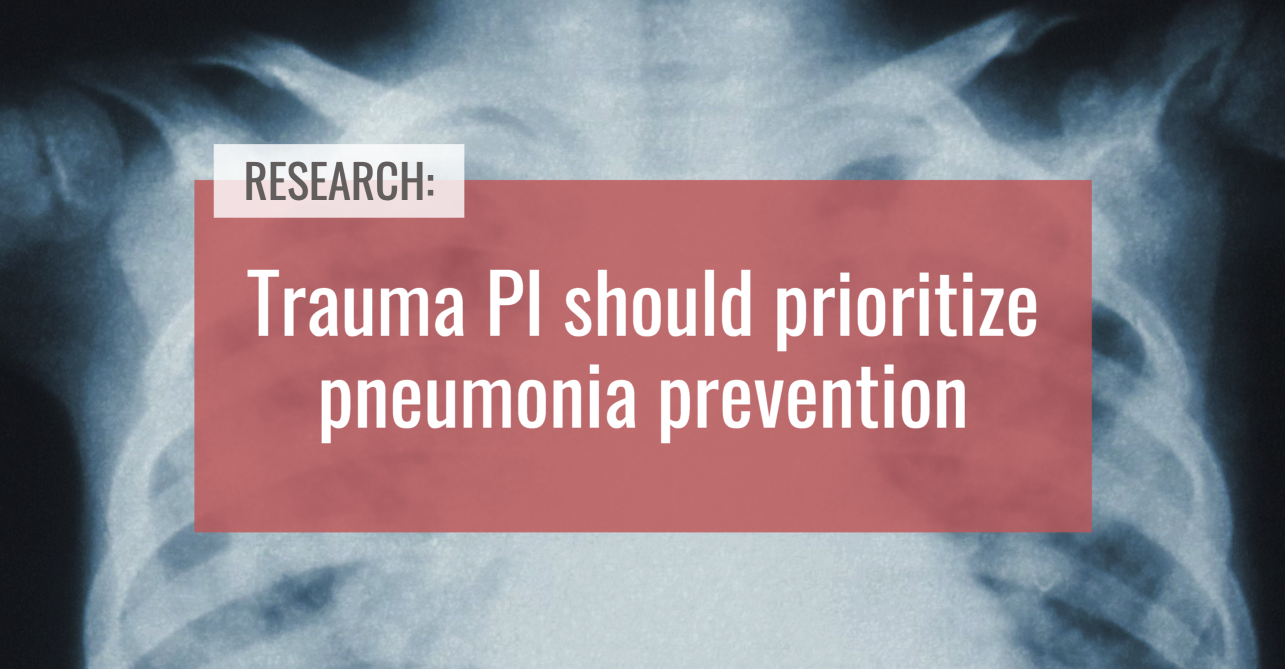Trauma programs face significant resource constraints, so performance improvement (PI) efforts should focus on issues that have the greatest impact on patient outcomes. According to a new study, the most promising target for trauma PI today is pneumonia prevention.
The study was conducted by a team of researchers at the University of Wisconsin and published recently in the Journal of Trauma and Acute Care Surgery.
According to co-author Laura Krecko, MD, the research team sought to quantify the impact of six common hospital-acquired conditions (HACs) on hospitalized trauma patients. Specifically, they examined clinical outcomes and resource utilization associated with venous thromboembolism, central line associated blood stream infection, pneumonia, pressure ulcer, urinary tract infection and surgical site infection

“The growing number of quality improvement initiatives makes it increasingly important to judiciously allocate resources toward efforts that have the highest impact on patient outcomes,” wrote Dr. Krecko, who was interviewed by email. “Our goal was to determine where we and others should focus quality improvement efforts in trauma care.”
The study is based on more than half a million adult patients in the Trauma Quality Improvement Program database for the years 2013 through 2016. Patients had an ISS of 9 or greater and were hospitalized 5 days or longer.
Dr. Krecko and colleagues used a methodology for calculating population-attributable fractions to determine the relative contribution of various HACs to post-injury clinical outcomes and resource use.
The researchers found that pneumonia demonstrated the strongest association with poor clinical outcomes and high resource utilization.
“Prevention of pneumonia in our cohort would have resulted in estimated reductions of: 22.1% for end organ dysfunction, 7.8% for mortality, 8.7% for prolonged hospitalization, 7.1% for prolonged ICU stay, and 6.8% for need for mechanical ventilation,” the authors wrote. “The impact of other HACs was comparatively small.”
These findings may prompt many trauma leaders to rethink their PI priorities.
“Our results were somewhat surprising given that protocols to reduce other hospital-acquired infections (such as surgical site infections, central line-associated bloodstream infections and catheter-associated urinary tract infections) are ubiquitous, whereas standardized efforts for prevention of hospital-acquired pneumonia are less consistently enforced,” Dr. Krecko wrote.
Since the study is based on national data, Dr. Krecko believes the findings can be generalized to all U.S. trauma centers.
“We hope that our results motivate others to prioritize pneumonia surveillance, standardize criteria for diagnosis and conduct rigorous studies to evaluate and substantiate pneumonia prevention protocols,” Dr. Krecko wrote. “This may require giving somewhat less attention to areas that don’t appear to have as high an impact on patient outcomes.”

